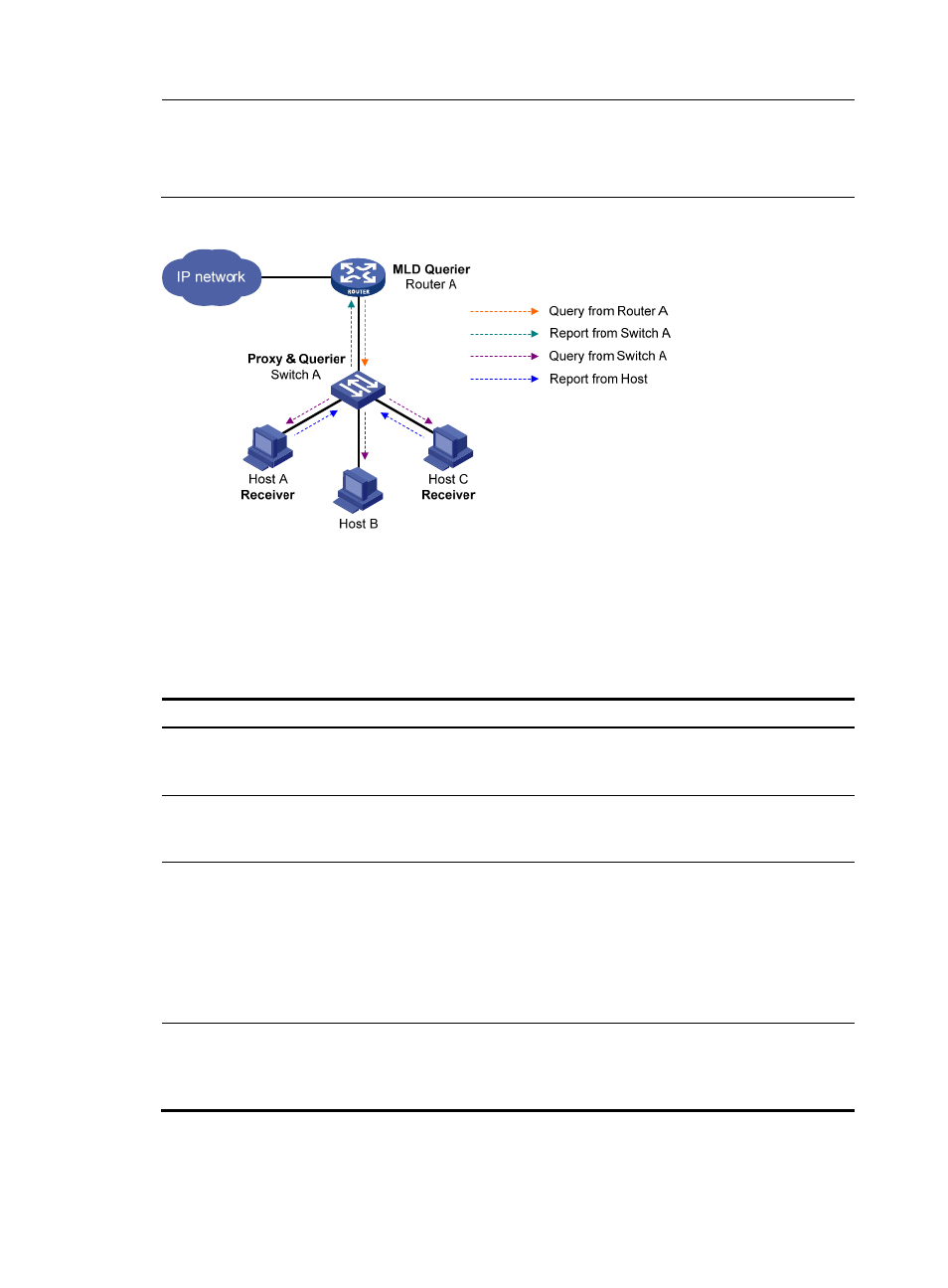H3C Technologies H3C S10500 Series Switches User Manual
Page 275

260
NOTE:
Even though an MLD snooping proxy is a host from the perspective of its upstream device, the MLD
membership report suppression mechanism for hosts does not take effect on it. For more information
about the MLD report suppression mechanism for hosts, see the chapter “MLD configuration.”
Figure 69 Network diagram for MLD snooping proxying
As shown in
, Switch A works as an MLD snooping proxy. As a host from the perspective of the
querier Router A, Switch A represents its attached hosts to send their membership reports and done
messages to Router A.
describes how an MLD snooping proxy processes MLD messages.
Table 8 MLD message processing on an MLD snooping proxy
MLD message
Actions
General query
When receiving an MLD general query, the proxy forwards it to all ports but the receiving
port. In addition, the proxy generates a report according to the group memberships it
maintains and sends the report out all router ports.
Multicast-addres
s-specific query
In response to the MLD group-specific query for a certain IPv6 multicast group, the proxy
sends the report to the group out all router ports if the forwarding entry for the group still
contains a member port.
Report
When receiving a report for an IPv6 multicast group, the proxy looks up the multicast
forwarding table for the entry for the multicast group. If the forwarding entry is found with
the receiving port contained as a dynamic port in the outgoing port list, the proxy resets the
aging timer for the entry. If the forwarding entry is found but the outgoing port list does not
include the receiving port, the proxy adds the port to the outgoing port list as a dynamic
member port and starts an aging timer for it. If no forwarding entry is found, the proxy
creates the entry, adds the receiving port to the outgoing port list as a dynamic member port
and starts an aging timer for the port. Then, it sends a report to the group out all router ports.
Done
In response to a done message for an IPv6 multicast group, the proxy sends a
multicast-address-specific query for the group out the receiving port. After making sure that
no member port is contained in the forwarding entry for the IPv6 multicast group, the proxy
sends a done message for the group out all router ports.
